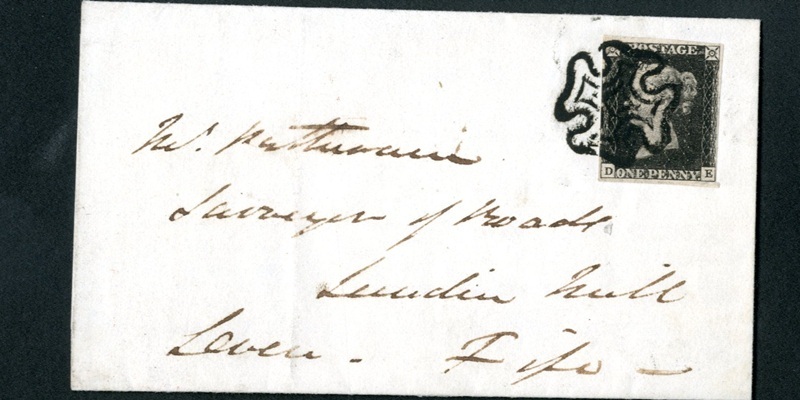It cost only one old penny to send to Fife but 171 years later this letter is expected to fetch up to £3000 at auction.
The letter was sent from Perth to ‘H. Petherham, Surveyor of Roads, Lundin Hall, Leven, Fife,’ on October 18, 1840, and is one of the earliest Fife letters featuring a Penny Black postage stamp.
However, it is not the stamp that makes this letter particularly valuable; it is the black Maltese cross cancellation mark across the stamp which makes it rare and desirable for collectors.
If it had been posted five months earlier on May 6, 1840, the day Britain’s first adhesive postage stamp was introduced it would now be worth even more. Tens of thousands of pounds more.
The Leven letter is set to fetch between £2500 and £3000 when it is auctioned at Spink in Bloomsbury, London, on February 28.
Dominic Savastano is a postage stamps expert at Spink and he said, “The red Maltese cross was introduced on May 6, 1840, the day the Penny Black postage stamp was introduced. But it was found that the red cancellation could easily be removed, so the stamp could be used again.
“After a series of experiments it was found that a black postmark was harder to remove but a black postmark on a black stamp doesn’t work very well and so the one penny red-brown postage stamp was introduced.
“The black Maltese cross was introduced in February 1841 (although there were earlier experimental usages in London).”
To find a black Maltese cross on an 1840 Scottish letter is unusual and makes the Leven letter 12 times more valuable than if it had featured the more common 1840 red Maltese cross, which would make the letter worth about £250.
The “superb Perth date stamp” on the back of the letter enhances its value.
Mr Savastano says the black Maltese cross was most likely an error, the date stamp on the back “also being struck in black accidentally, which did happen.”
The stamp on the Leven letter is also more valuable than some other Penny Blacks because of its “very large margins.”
Penny Blacks were not perforated, so had to be cut by postal clerks from sheets, which is why margins can vary. Collectors generally prefer larger margins.
It is likely the letter, to Englishman Henry Petherham in Leven, travelled the 30 miles to the town by horse-drawn coach and arrived on the same day it was posted in Perth, as the postal service was generally quicker and more efficient than it is today, before the age of motorways, high-speed gadgetry and postcodes.
That year, 1840, when Mr Petherham received the letter from Perth, was eventful in other ways. For that year Charles Dickens started serialising his latest book, The Old Curiosity Shop; Queen Victoria celebrated her 21st birthday; and Scottish explorer Dr David Livingstone left Britain for Africa.
